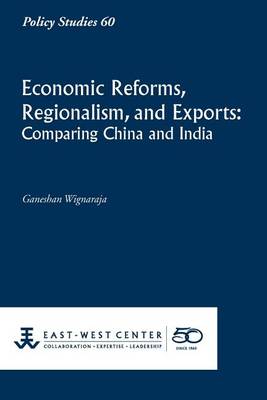This paper undertakes a comparative empirical assessment of economic reforms and exports in the rising Asian giants, China and India. It explores the past record and future challenges. In recent years, China has surged ahead of India to dominate world manufactured exports, but India has acquired competitive capabilities in skill-intensive services. Favorable initial conditions (e.g., large markets and low-cost productive labor) shaped the giants' success. While the gradual switch to market-oriented reforms in the late-1970s drove trade-led growth in the giants, China was swifter and more coordinated. It introduced an open door policy towards foreign direct investment (FDI), actively facilitated technological upgrading of FDI, steadily liberalized a controlled import regime, ensured a competitive exchange rate, and concluded more comprehensive free trade agreements (FTAs) with Asian developing economies. India has attempted to enact economic reforms since 1991, particularly to attract FDI and liberalize imports. Therefore, one might expect the gap in trade performance between China and India to narrow over time. However, both giants face an uncertain world economy after the global financial crisis, and future success will depend on evolving reforms. Critical areas are how the giants respond to integrating with production networks, promote technology development, manage real exchange rates, and mitigate the risk of protectionism.
- ISBN10 1932728945
- ISBN13 9781932728941
- Publish Date 29 July 2011
- Publish Status Active
- Publish Country US
- Imprint East-West Center Washington
- Format Paperback (US Trade)
- Pages 98
- Language English
